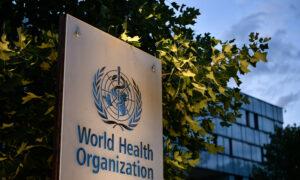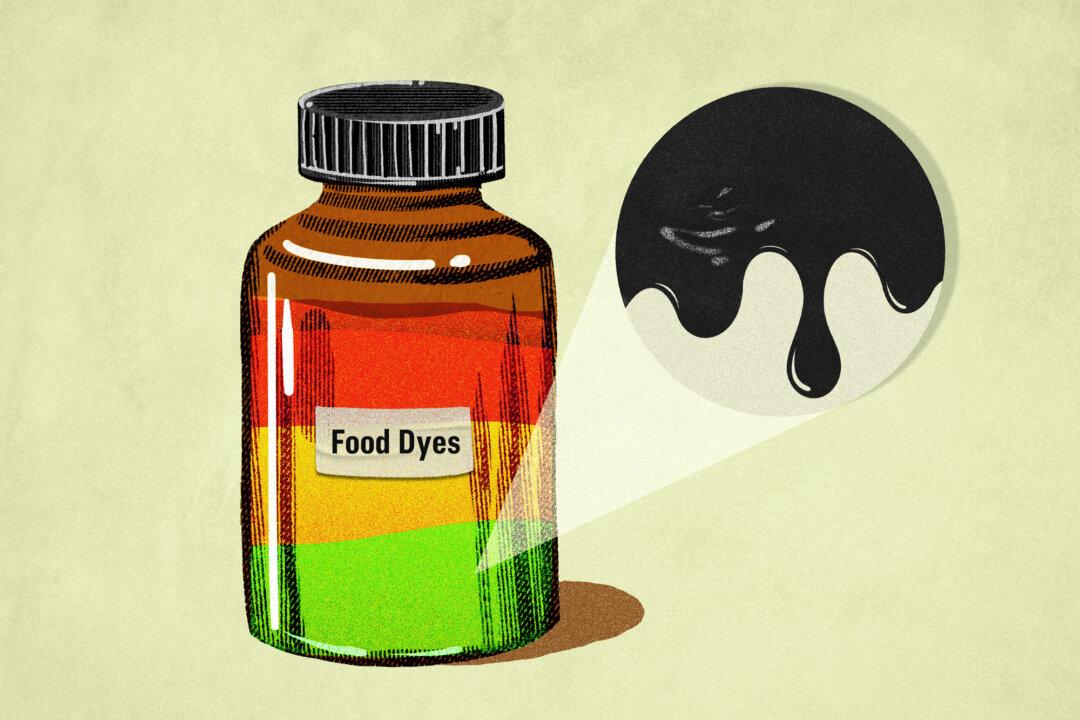In early October, Stanford University held a conference to discuss and reflect on pandemic policies during COVID-19.
The goal was to “bring together people with different perspectives” and “try to repair some of the rifts that opened during COVID,” said Jonathan Levin, the newly inaugurated Stanford president, in his opening speech at the conference.
Public health practitioners and policymakers from all sides of the COVID-19 policy debate participated in four expert panels discussing domestic and international pandemic policies, misinformation, and COVID-19 virus origins.
“This was really the first conference of its kind that I’m aware of, with experts and thought leaders with contrasting viewpoints on the pandemic engaging in good-faith discussion,” said Jan Jekielek, senior editor at The Epoch Times, who moderated the “COVID-19 Origins and the Regulation of Virology” panel at the event.
Myopic Public Health Policies
Panelists generally agreed that many of the health policies enacted, like lockdowns and school closures, were too focused on immediate health impacts and had less consideration for collateral damage.In the first panel, six out of seven experts agreed that they thought some of the public health policies were good ideas but then later changed their minds.
“There was largely a focus on preventing mortality, and that over time that might have been at the exclusion of giving due weight to other considerations,” said Josh Salomon, a professor of health policy at Stanford University, adding that decision-makers need to revisit the trade-offs between various decisions more nimbly.
“In the long term, a lot of other things are much more important for public health than the immediate mortality rates,” said Anders Tegnell, former state epidemiologist of Sweden at the Public Health Agency of Sweden.

Kevin Bardosh, a medical anthropologist and director of UK-based Collateral Global, one of the event sponsors and a nonprofit that studies the impacts of government-mandated pharmaceutical interventions during the pandemic, and Vinay Prasad, a professor of epidemiology and biostatistics at the University of California–San Francisco (UCSF), spoke on how long-term school closures caused significant learning losses in children and young people, the group least at risk from the virus.
Dr. Monica Gandhi, a professor of medicine at UCSF and doctor of infectious diseases, said that psychologists and mental health specialists should have been involved in the consideration of the effects of these policies on childhood development and loneliness in the older population.
“We also know that the economy is very much connected to public health, so ignoring [it] completely, of course, does not make any sense,” Tegnell said.
Douglas Owens, professor and chair of the Department of Health Policy in the School of Medicine at Stanford University, spoke about the difficulty of adapting and quickly making decisions early on in the pandemic when the virus was spreading exponentially by the day.
“Part of the issue is that the public health people, their remit is to protect public health, but they don’t have either the authority [or] the information … to ... say if a public health measure is going to have other negative impacts. That’s not in their decision-making capacity,” he said.

Peter Blair, an associate professor of education at Harvard University who served on the third panel, which discussed pandemic policy, said creating ecosystems before pandemics happen was important so that experts across all sectors can come together and make well-rounded decisions.
“Lots of excess deaths [were] not caused by COVID. We’re actually not sure how many because there’s not good data on that. Tens of millions of new mental health disorders, $8 trillion of lost income for workers worldwide, and the simultaneous transfer of wealth upwards of $4 trillion of global debt,” Bardosh said, listing some of the collateral damage he attributed to the COVID-19 pandemic policies.
Government Censorship and Information Regulation
Panelists on the second panel, which focused on misinformation, censorship, and academic freedom, discussed whether the government should be allowed to censor and control information during emergencies.Dr. George Tidmarsh, an adjunct professor of pediatrics and neonatology at the Stanford School of Medicine, one of the sponsors of the event, and the second panel’s moderator, noted that the United States, throughout history, has permitted or “at least tolerated censorship” during times of war, comparing the pandemic to a war.
Panelist Gardiner Harris, a senior New York Times reporter, noted the increasingly homogenized and controlled communication from public health agencies.
“I covered the CDC for nearly 20 years. ... I used to just fly to Atlanta, and I could wander around the CDC, knock on doors, talk to anybody I wanted to,” he said. “What happened to the pandemic, which was so disastrous, is that there’s actually a huge plethora of opinions within the CDC, same thing at the NIH—all of those organizations, basically all of those voices, were silenced.”
Neil Malhotra, a professor of political economy at the Stanford Graduate School of Business, said that trust in public health authorities has declined because public health experts became self-appointed experts in both facts and values during the pandemic, and while facts are universal, people’s values are not.
“What we relied on public health officials to do was give us facts … but the problem is ... that public health authorities then bled into values,” he said. “Nobody is an expert in values, and when the people that are experts in fact start claiming expertise in values, we have a severe problem.”
“I think it would be helpful if people stayed in their own lanes,” said Michael McConnell, professor and director of the Constitutional Law Center at Stanford Law School and board advisor to Meta.
“It really bothered me during the COVID matter that I never knew whether the public policy decision was being made by the scientists or whether it was being made by the politicians, exactly. And I think that it would be better if the scientists just told us the facts and then, like, have a different person identifiably convert [or] use that information to make a public policy.”

Something that Malhotra said people found hypocritical was how COVID-19 vaccine manufacturers underwent less regulatory scrutiny than other pharmaceutical companies in order to encourage vaccination.
For example, unlike other drug manufacturers, the COVID-19 vaccine manufacturers did not have to include side effects and potential harms of the COVID-19 vaccine in their advertising.
Attorneys also discussed how the government censored discussions contrary to the mainstream messaging.
Jenin Younes, an attorney involved in the Murthy v. Missouri case, which argued that the government used social media to censor free speech, emphasized that while the Supreme Court (SCOTUS) ruled that the plaintiffs did not have standing to seek a ruling, the decision did not mean that the government is allowed to censor protected speech via social media platforms. SCOTUS ruled that the government should not coerce or significantly encourage social media companies to suppress protected speech on their platforms.
McConnell and Younes disagreed on whether the government can encourage social media to control certain content. McConnell said that it is an unanswerable question.
COVID Origins: Many Speculations
The final panel discussed COVID-19 origins.Dr. Laura H. Kahn, a physician, research scholar, and co-founder of One Health Initiative, discussed the lack of evidence to support the natural-origins theory. She listed SARS-CoV-1 and MERS as examples of when a virus was later proven to be due to an animal-spillover event.
With SARS, scientists found that civets, believed to be the natural reservoir for the virus, had antibodies to viruses over 99 percent similar to SARS. Furthermore, people who worked with civets were more likely to have antibodies to SARS. This was the same with MERS.
Most experts on the panel believed that gain-of-function research, if unchecked, could lead to disastrous viruses and biosecurity threats.
Simon Wain-Hobson, professor emeritus of virology at the Pasteur Institute in Paris, said that with HIV, scientists agreed that the virus emerged from nature because “there was no one clever enough to have made such a virus that was so diabolical, so it was clearly natural.”
However, he argued that experiments in the laboratory have since surpassed those limitations.
Bryce Nickels, a professor of genetics at Rutgers University, promoted the Risky Research Review Act, which was introduced by Sen. Rand Paul (R-Ky.).
If made into law, the bill would subject any research that could threaten public health or national security to an independent review by nonelected experts.
Sunetra Gupta, a professor of theoretical epidemiology at the University of Oxford and affiliated with Collateral Global, disagreed that such research should be so strongly regulated.
“Gain-of-function experiments are far more likely to lead to medical interventions that improve the lives of people than to spawn a new pandemic. Nature is far more adept at that,” she said.
Kahn also mentioned that gain-of-function research led to the mass production of insulin through genetically modified bacteria.
Alex Washburne, a computational biologist and epidemiologist who was one of the first researchers to discuss lab-origin theory, was also one of the panelists.
SARS-CoV-2 has a furin cleavage site that is absent in its close relatives. This furin cleavage site appeared in the Wuhan variant a year after researchers suggested inserting it as part of their gain-of-function research, Washburne said. Additionally, examining the SARS-CoV-2 genome makes it clear that the virus has many different DNA changes compared to its relatives.
“Being the statistician behind that and kind of unveiling the curtain of these statistical tests, that was the point when I started speaking up a little bit more about ... my estimates of the odds of the lab origin.
“But I think it’s still worth considering alternative scenarios so we don’t have blind spots,” he added.

Gupta disagreed with both of the main COVID-19 origin theories: the lab-leak and the natural-origins theories.
She said that her experiments in the laboratory show her that it is very difficult to make an effective living virus. Additionally, once released, a virus needs to out-compete all the other viruses in the wild and also out-compete people’s immunity to viruses.
“What is far more likely is that the virus had already been circulating over a period of several months in China and only came to light in Wuhan. Just because we found it in Wuhan doesn’t mean it came from Wuhan.”
Nickels said that the pushback in scientific papers and stakeholder communities against the discussions of the lab-origins theory was highly suspicious, suggesting that they’re part of a coverup. Washburne said that there has been strong resistance to publishing his own paper on virus origins. One of the journals to which he submitted his paper accepted it and billed him for its publication, but the journal’s editor was then fired.
“It’s because the lab origin is just extremely uncomfortable,” Washburne said. “When you go to another conference, the biologists who work on this are in that room.
“To point at an actual person and to say their research is key for understanding the lab-origin theory of SARS-CoV-2 makes it very difficult to have this discussion,” he said, adding that it can feel very invasive to the research community.
Wain-Hobson said that in 2014, he attended two conferences discussing gain-of-function research two days apart. The first was in Germany, and the second was in the United States.
At the German conference, “the food was superb, and the discussion was superb; it was the best meeting I'd ever had. Came to the U.S. … and the discussion was staccato, and there was so little of it that the discussion sessions collapsed.”
“The thing, you see, was because the U.S. funded the gain of function,” Wain-Hobson said.
The U.S. funding for gain-of-function research also comes through taxpayer money, so any controversy with the research can affect researchers’ finances, Nickels added.
“I think that scientists like to think that ... their work is beneficial for humanity, and the thought that perhaps an experiment has gone awry might be too painful to discuss, and they just want to shut it down and not acknowledge it. But that’s not the way to get public trust. We need to be transparent,” Kahn said.
The conference ended with remarks from Dr. John Ioannidis, a professor of medicine, epidemiology, and population health at Stanford University.
“Please do keep the conversation open even after this session ends,” Ioannidis said, adding that with the inauguration of the new president, he believes that the winds referenced in Stanford’s motto, “Die Luft der Freiheit weht,” (meaning “The Winds of Freedom Blow”) will blow more strongly.






